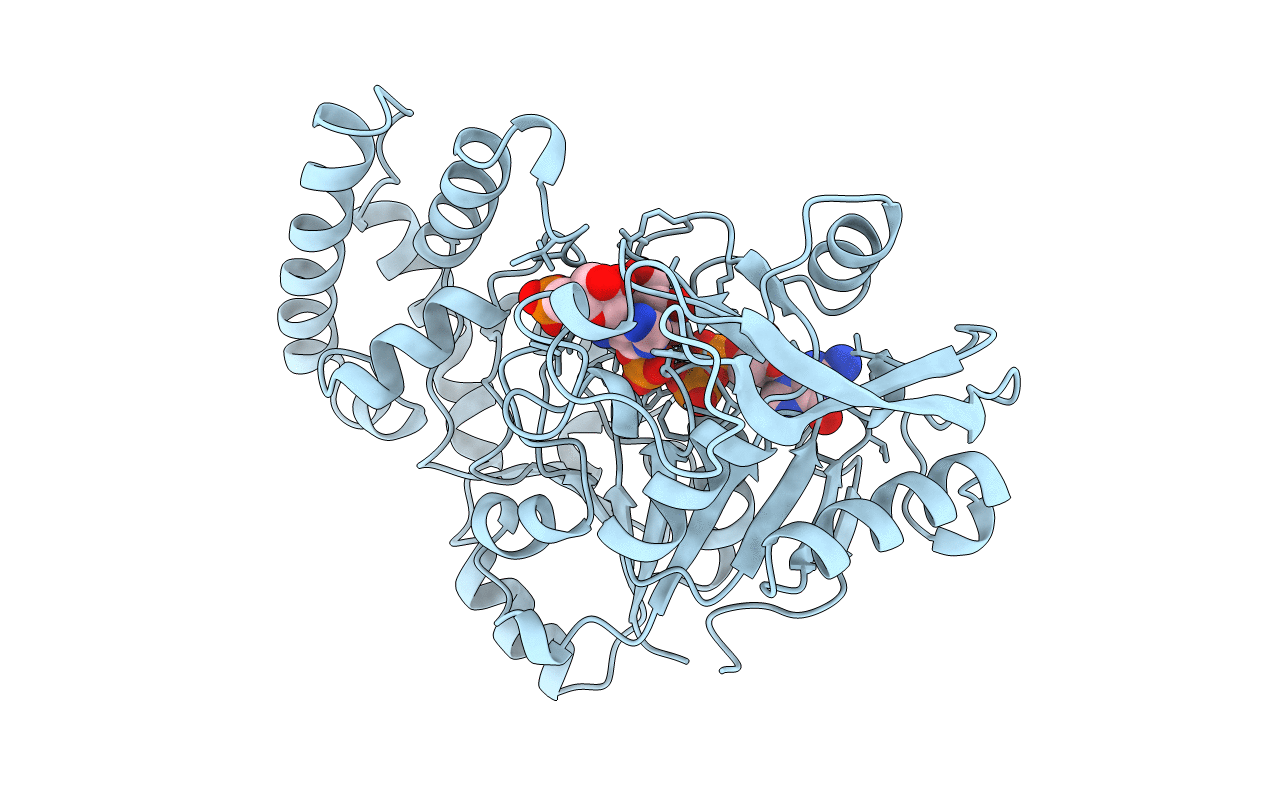Abstact
Asp13 and His41 are essential residues of adenylosuccinate synthetase, putatively catalyzing the formation of adenylosuccinate from an intermediate of 6-phosphoryl-IMP. Wild-type adenylosuccinate synthetase and three mutant synthetases (Arg143 --> Leu, Lys16 --> Gln, and Arg303 --> Leu) from Eschericha coli have been crystallized in the presence of IMP, hadacidin (an analogue of L-aspartate), Mg2+, and GTP. The active site of each complex contains 6-phosphoryl-IMP, Mg2+, GDP, and hadacidin, except for the Arg303 --> Leu mutant, which does not bind hadacidin. In response to the formation of 6-phosphoryl-IMP, Asp13 enters the inner coordination sphere of the active site Mg2+. His41 hydrogen bonds with 6-phosphoryl-IMP, except in the Arg303 --> Leu complex, where it remains bound to the guanine nucleotide. Hence, recognition of the active site Mg2+ by Asp13 evidently occurs after the formation of 6-phosphoryl-IMP, but recognition of the intermediate by His41 may require the association of L-aspartate with the active site. Structures reported here support a mechanism in which Asp13 and His41 act as the catalytic base and acid, respectively, in the formation of 6-phosphoryl-IMP, and then act together as catalytic acids in the subsequent formation of adenylosuccinate.



